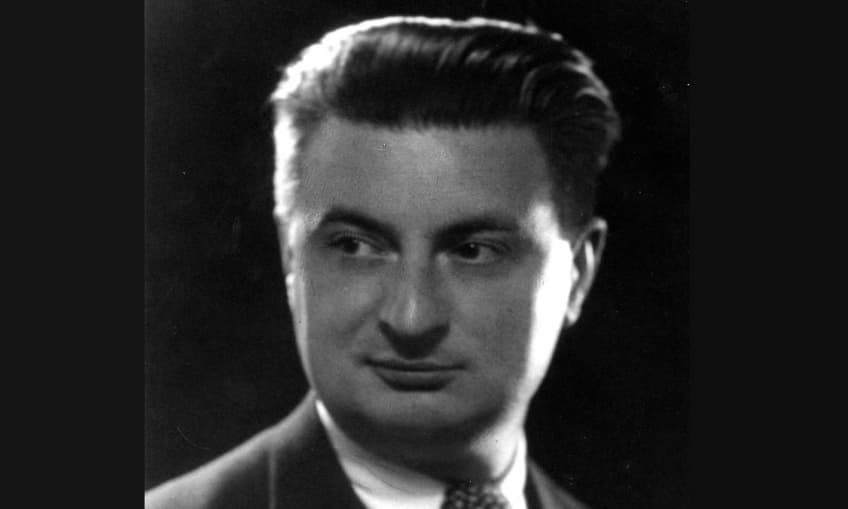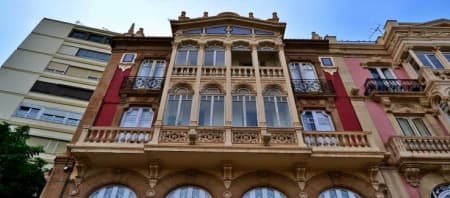Blog
»
{{catList[31].label}}
» Guillermo Langle Rubio
Guillermo Langle Rubio

Guillermo Langle Rubio was a Spanish architect who made his mark on the city of Almeria, constituting a respected symbol of the architectural development of Almeria during the 20th century.
He was born in Almeria in 1895, the son of Concha Rubio and the prestigious Republican lawyer, poet, and politician, Placido Langle Moya. They and the example of his brothers instilled discipline, spirit, and vigour for work.
He was always aware of the evolution of architecture in the academic field through specialized literature and through contacts with his colleagues and related professionals. This made him able to offer viable and effective answers, from architecture, to the demands of each specific historical situation.
In 1925, he was appointed municipal architect, a position he successfully carried out for 40 years, alternating this responsibility with his private activity. It left its stamp on the appearance of the city in public facilities, official and private buildings, and social housing, squares, and fountains.
From that moment, in the mid-1930s, he abandoned decorationism and combined practicality and reinforced concrete in his works, as we find in the official buildings he undertook, such as the building that currently occupies the Police Headquarters and the complexes providing housing for workers.
Within this functional approach to architecture, one can also recognize the successful proposal of Guillermo Langle Rubio, who promoted the creation of tunnels in the subsoil of the city that served as an air refuge during the Spanish Civil War.
Another work of the utmost importance because it addressed the serious problem of the housing shortage of the time is the architectural project that led to the urbanization of the coast with the construction between 1940 and 1947 of 245 single-family semi-detached houses in rows, which he called “Ciudad Jardín”.
The building constructed between 1952 and 1962 as a bus station cannot be omitted, as it is a clear example of functionality and rationality—a building considered among the main works of Andalusian architecture of the modern movement.
The excellent architect Guillermo Langle Rubio retired in 1965. Gloria Trujillo Rivas's widower and married again to Maria Josefa Granados Bravo. At 86 years of age, he died in his beloved Almeria in 1981.
He was born in Almeria in 1895, the son of Concha Rubio and the prestigious Republican lawyer, poet, and politician, Placido Langle Moya. They and the example of his brothers instilled discipline, spirit, and vigour for work.
Beginnings of Guillermo Langle Rubio
He attended the Higher School of Architecture in Madrid and, upon graduation, returned to his native Almeria at the end of 1923, from where he was absent a few times.He was always aware of the evolution of architecture in the academic field through specialized literature and through contacts with his colleagues and related professionals. This made him able to offer viable and effective answers, from architecture, to the demands of each specific historical situation.
In 1925, he was appointed municipal architect, a position he successfully carried out for 40 years, alternating this responsibility with his private activity. It left its stamp on the appearance of the city in public facilities, official and private buildings, and social housing, squares, and fountains.
Contribution to the development of the city of Almeria
Several different styles or architectural approaches can be seen in the work of the architect Guillermo Langle Rubio.His first inclination toward neo-baroque and grandiloquent historicism was revealed by the homes on Regocijos and Aguilar de Campoo streets, the Plaza de las Flores, and the Puerta de Purchena, among other works.
Later, adopting the influences of the time, he leaned towards rationalism and a marked functionality of the work, rather than its aesthetics.
Later, adopting the influences of the time, he leaned towards rationalism and a marked functionality of the work, rather than its aesthetics.
Within this functional approach to architecture, one can also recognize the successful proposal of Guillermo Langle Rubio, who promoted the creation of tunnels in the subsoil of the city that served as an air refuge during the Spanish Civil War.
Approximately 5 km of tunnels were built that provided protection from the 52 air and sea bombardments suffered by the population, which received more than 750 bombs.
In the years after the war, from his position in Municipal Engineering, Guillermo Langle Rubio proposed closing the mouths of the tunnels by building markedly rationalist functional kiosks.
In the years after the war, from his position in Municipal Engineering, Guillermo Langle Rubio proposed closing the mouths of the tunnels by building markedly rationalist functional kiosks.
The building constructed between 1952 and 1962 as a bus station cannot be omitted, as it is a clear example of functionality and rationality—a building considered among the main works of Andalusian architecture of the modern movement.
The excellent architect Guillermo Langle Rubio retired in 1965. Gloria Trujillo Rivas's widower and married again to Maria Josefa Granados Bravo. At 86 years of age, he died in his beloved Almeria in 1981.
Activities in the province of Almeria
Share Article
More Articles












